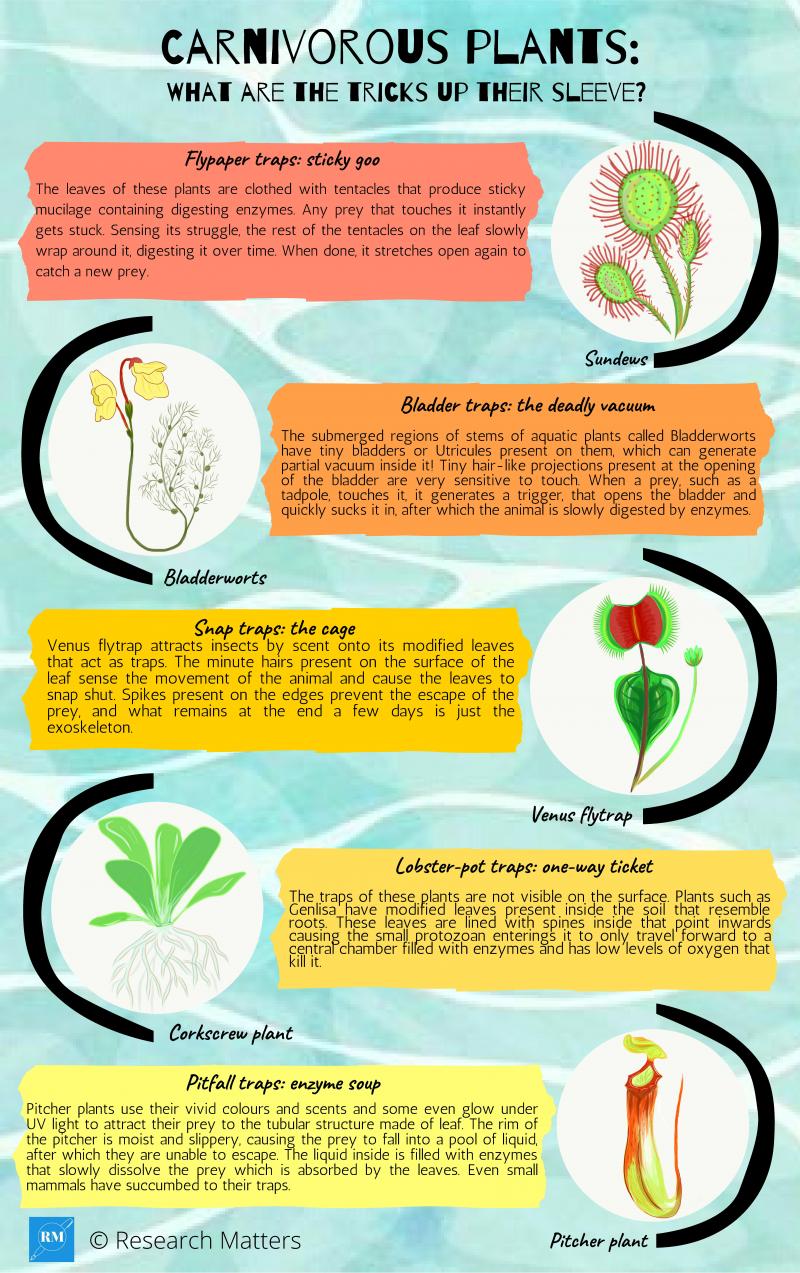
Carnivorous plants may not be the first thing that comes to one’s mind when thinking about plants. But, these mysterious plants are a fantastic example of nature’s way to adapt to different environmental conditions.
There are approximately 750 carnivorous plants found all over the world. India has at least 43 known species of such plants including pitcher plants, venus flytraps and the sundews. Studies show that carnivory has evolved independently at least nine times in flowering plants, indicating that this is a good adaptation that helps in their survival. These plants tend to grow in acidic soil, which is poor in essential nutrients required for growth. Therefore, they attract, trap and digest their prey by using different mechanisms. It gives them the required nutrients that soil cannot provide. Insects are not the only prey for these plants; they also feed on arachnids, fishes, amphibians, birds and even mammals! To do so, these plants have evolved various tricks up their sleeves.





